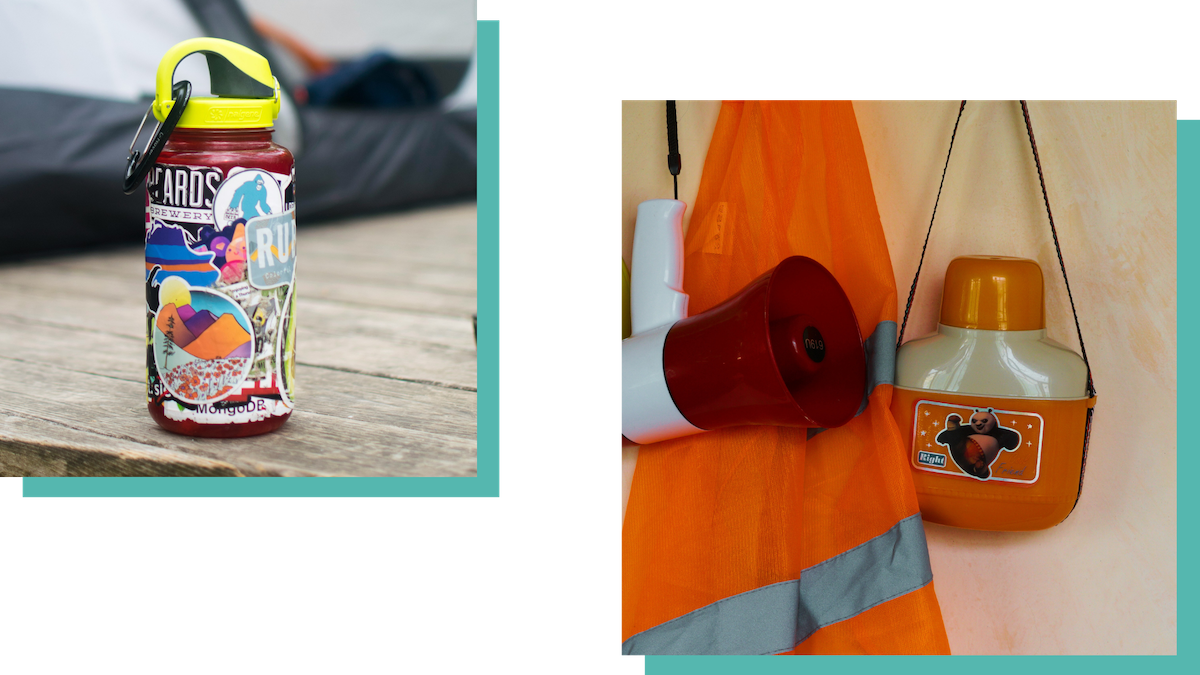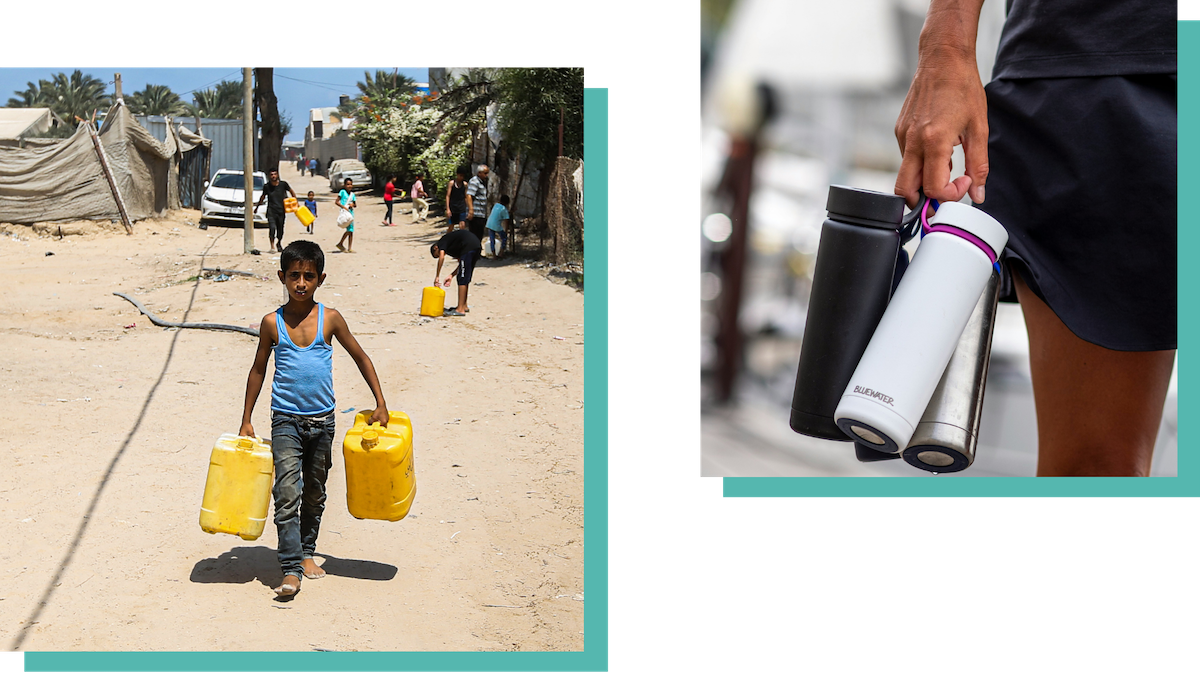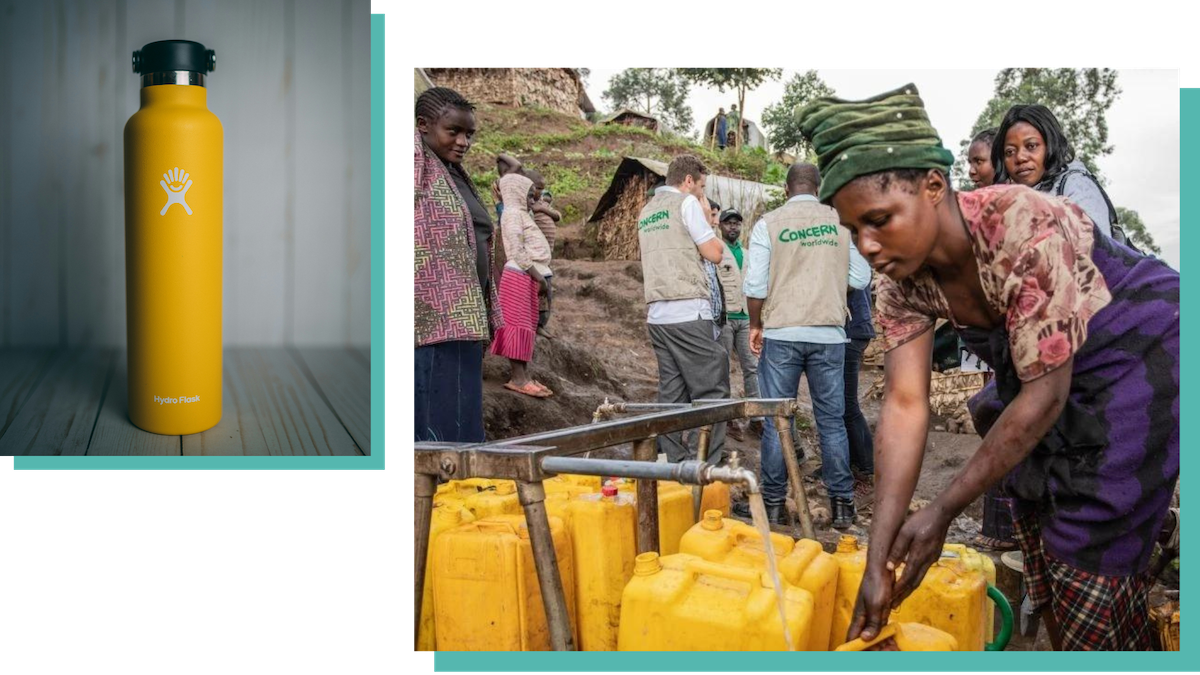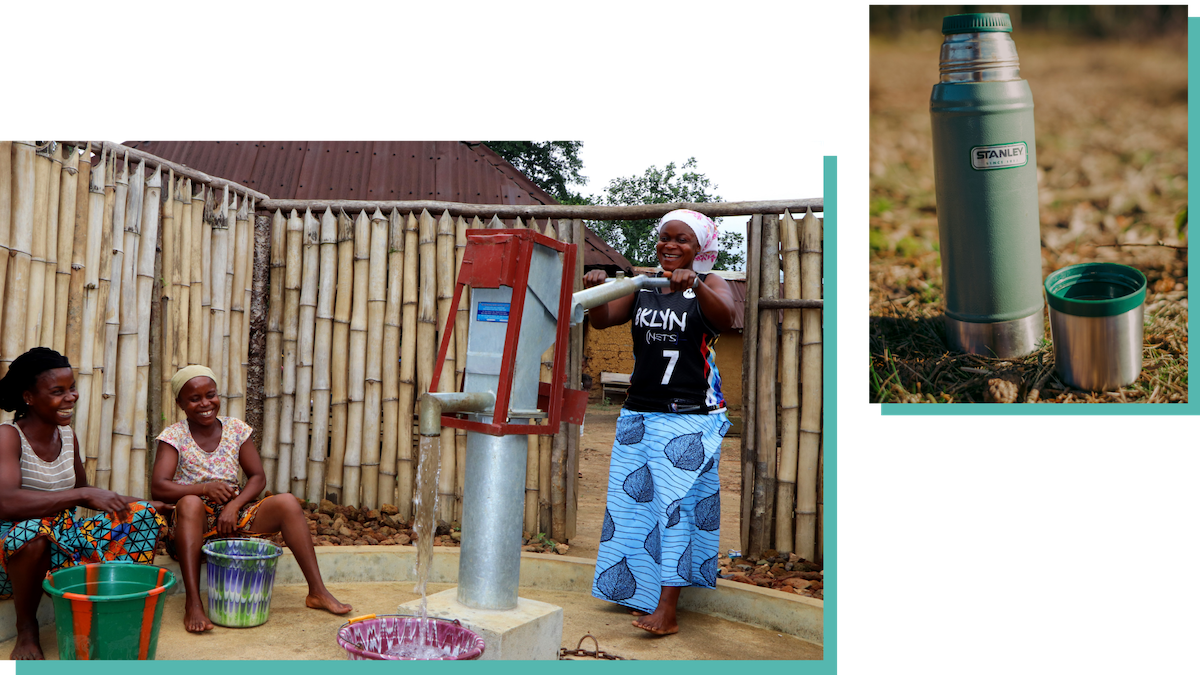The answer, as they say, may surprise you…
Let’s get this part out of the way: You’re not on the wrong website, the Concern site wasn’t hacked, and we aren’t getting into the business of branded content or sponcon.
So why are we talking about the Stanley cup (aka the Stanley Quencher or the Stanley tumbler — not the hockey trophy)? Well, to begin with, it’s hard to go online these days and not see the ubiquitous, 40-ounce, $45 water bottles. For a little over a century, the Stanley 1913 company made stainless steel thermoses that were favored by industrial workers and wilderness adventurers for both their sturdiness and lifetime guarantee (the original color isn’t too far off from Concern’s own green…).
However, in the last few years, something began to change. Stanley’s revenue went from $73 million in 2019 to $750 million in 2023. Videos of limited-edition tumbler drops at Target look like B-roll from Black Friday sales. The cup can also be adorned with a number of unofficial accessories, including a miniature backpack, custom-fit ice cubes, and snack trays. Earlier this year, Forbes reported that the hashtag #StanleyTumbler garnered a collective 6.7 billion views on TikTok.
Why did they get so popular?
For starters, water is one of the most basic necessities to life. Drinking water is essential for our health, and many of us don’t get enough of it. (The National Academies of Science, Engineering and Medicine recommend that the average male drink 125 ounces of water each day and that the average woman drink 91 with about 20% of that water coming from food.)
In most US cities, we’re also constantly on-the-go, meaning that if we don’t have water that can travel with us from home to work to the gym to school. And water bottle trends come and go in waves based on design, function, and endorsement (think: Whole Foods and Hydro Flask, or back in the 90s when every college student had a Nalgene). These factors — combined with Stanley’s history as a durable, reliable brand, the aesthetic quality of the tumbler overall plus limited-edition drops (which create a sense of scarcity), and the influence of social media — have led to entire cupboards and even walls devoted to Stanley cup collections.

Aren’t reusable water bottles good for the environment?
You may be wondering, What’s the big deal? Aren’t we supposed to be switching to reusable water bottles to cut down on single-use plastics? This is true, and reusable water bottles are, as the name would imply, a good alternative to buying bottled water.
However, every water bottle — reusable or otherwise — carries a carbon footprint. An MIT report reveals that it takes between ten and twenty uses of a reusable bottle to make up for its own environmental impact and put it ahead of a plastic water bottle. For those of us who use the same bottle every day, that’s a quick turnaround. But if you own 67 Stanleys, that’s going to be a bigger lift. Assuming the bottle gets refilled twice a day, and estimating conservatively, that would take about two years — and by that point, there may be a whole new water bottle trend.
This is one of the bigger problems that the Stanley craze represents. Water bottle trends have become more frequent and shorter lived — one article estimates that the Nalgene craze lasted about 30 years, while the Stanley trend only lasted two years. In fact, it’s allegedly already been eclipsed by a new It-bottle. Having one or two containers for your beverage makes sense; having enough to fill a wall may mean that some end up in a landfill without ever being used.
Meanwhile, 2 billion people lack access to clean and safe drinking water
In this sense, access to water has become seen as a privilege rather than a fundamental human right. This image plays into the larger global water crisis, which has likewise made access to clean and safe drinking water a luxury.
“I walk three kilometers to be able to provide this gallon of water for a family of 15 people,” says Khaled*, a Palestinian who was displaced to Rafah due to the ongoing crisis in Gaza. It’s another three kilometers to get back home, which is enough (especially in the heat) to make Khaled want to drink the entire gallon himself. Even this, however, is a hard-won commodity to Khaled’s family. “I have been standing for over two hours, and my turn has not yet come.”

The situation in Gaza is just one example of extreme water shortage. Last year, the UN reported that 2 billion people around the world aren’t able to access clean and safe drinking water. That’s just over 25% of the global population. And conflict is only one of the factors that’s making this staple for life a top-shelf item.
“Water scarcity is becoming endemic as a result of the local impact of physical water stress, coupled with the acceleration and spreading of freshwater pollution,” the report warns, adding that the problem is only going to get worse due to climate change — in both countries with water stress and scarcity, and other areas where water is abundant, such as Central Africa and East Asia.
The effects that a lack of safe drinking water can have on a community don’t stop at thirst. A water crisis can quickly become a hunger crisis. Turning to unsafe drinking water enables the spread of waterborne illnesses including diarrhea and cholera. Long treks to get water from a safe source leave the collectors (usually women and girls) vulnerable to attacks by animals or other people. At best, they’re still losing hours — a collective 200 million per day, according to one UNICEF study, which called this “a colossal waste of time.” Limited resources can often develop into community conflict. “I think that water is a real vector for peace when it's available in sufficient quantities,” says Yanfanshije Kahindo in the Democratic Republic of the Congo’s Kaniro village, where Concern worked to rehabilitate the water supply. “In the past, people used to fight to get water from the source.”

A valuable alternative
Garward Town is a hamlet in Liberia’s Grand Bassa region, about 50 miles east of the country’s capital, Monrovia. Less than a decade ago, less than 10% of Liberians had access to safely-managed drinking water. Until recently, the residents of Garward were among the 90% who lacked access. Often, the water that Garward Town residents did use wasn’t safe, either. “Every week we had no less than three households affected by stomach aches or some level of diarrhea,” sayid Retta Bryant, whose home was 15 minutes away from the closest stream.
In the nearby town of Buegbahn, Abigail David also noted that collecting water could be a deadly task. “The lives of our kids were at risk because they had to cross the motor road to collect water,” says Abigail. “This is a major highway connecting many counties to Monrovia, and cars ply it roughly without caution.”

Concern has been part of the Liberia WASH Consortium since 2007. Established by a group of international NGOs, the consortium was developed to support a holistic shift in water access and infrastructure across the country. As part of our work with the WASH Consortium, Concern worked with Garward, Buegbahn, and several other communities to establish local hand pumps. The pumps are maintained via locally-established WASH committees, which collect a fee of 50 Liberian dollars (about $0.25) from each resident to use towards pump repairs and maintenance.
The difference is stark. “Our nightmares are over,” says Retta. “This year’s rainy season is expected to be less stressful, because we shall have more time to focus on our farming activities instead of treating sickness due to waterborne diseases.” Likewise, Abigail and dozens of other parents have one less thing to worry about as their children grow, while their children have more time to focus on their education and the future.
Like a Stanley, the pumps are made from steel. Villagers bring buckets to the pump to gather what they need for the home. The colors and patterns of these buckets rival any trending water bottle. It’s the sort of collection we like to see.
Here’s what else $50 can do…
$50 may keep you hydrated (until the next water bottle catches your eye), but that’s a drop in the bucket compared to what else it can do. In the DRC, $1.50 provides enough water for a family of five living in a displacement site for a month. That means that $50 can keep three families with nearly a year’s worth of water.
It can also supply two months of water for a family in drought-struck Somalia via water trucking (another way that Concern brings water into water-scarce communities). And it costs only about three Stanley tumblers to provide a family in Bangladesh with limitless clean drinking water through the installation of a rainwater harvesting system.
The global water crisis: Concern’s response
Ensuring access to clean water and sanitation and providing hygiene information and training are key aspects of Concern’s work, with active water, sanitation, and hygiene (WASH) programs in 18 countries.
Over nearly 60 years, we have dug, drilled, and bored thousands of wells in remote and vulnerable communities across dozens of countries, and built countless latrines in their schools and health centres. The hours saved and the illnesses prevented make it one of the most effective things we do.
We work hand-in-hand with communities to help them assess the longstanding challenges they face, change behaviors, and ensure water and sanitation infrastructure will be maintained for the long term. And we foster a sense of ownership, build sustainable maintenance practices, and create transparent financial management systems that benefit the community.


